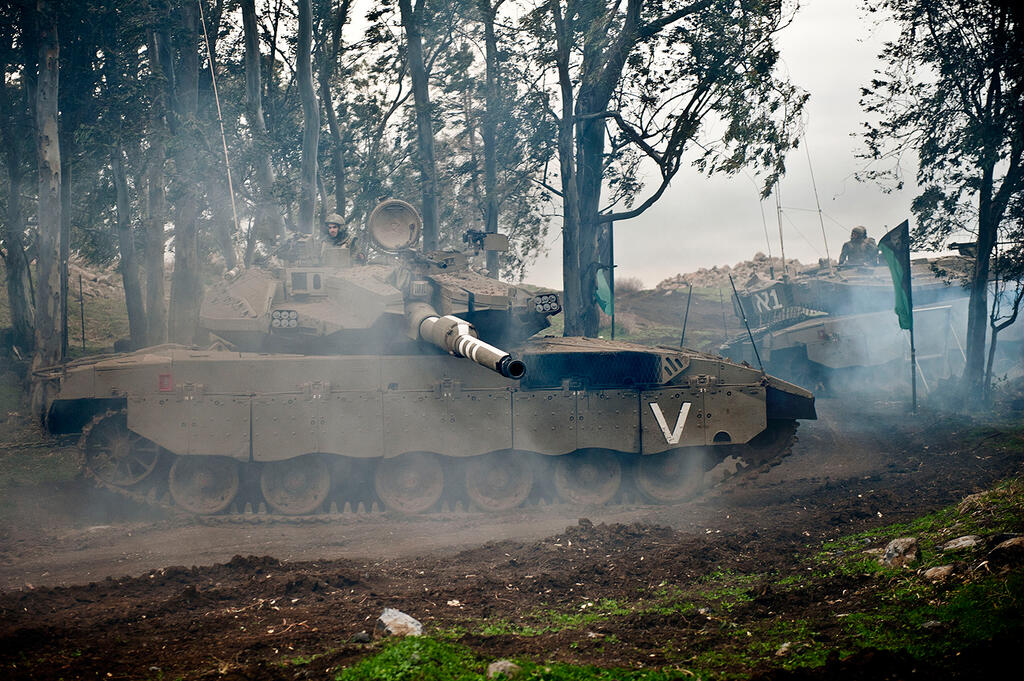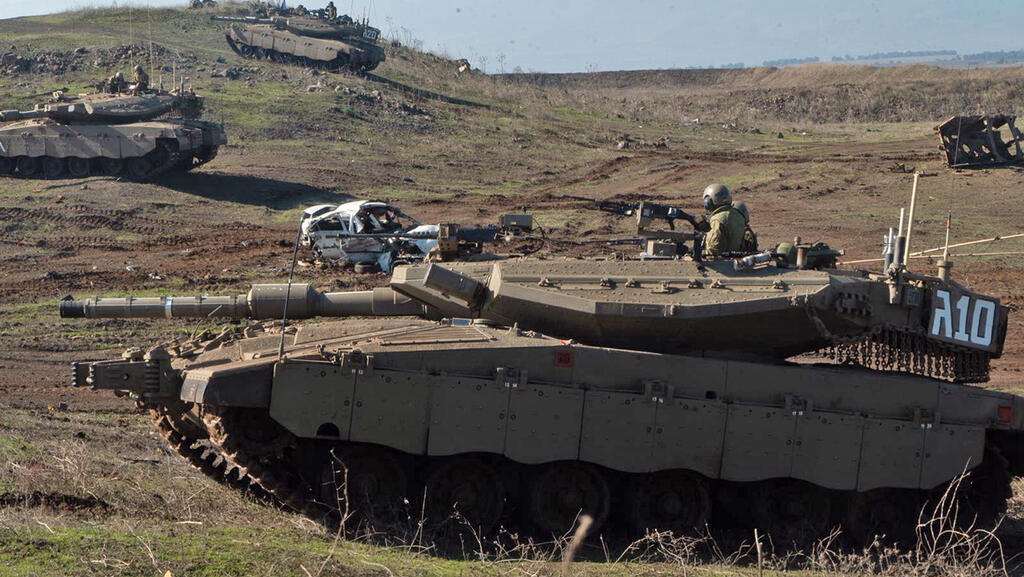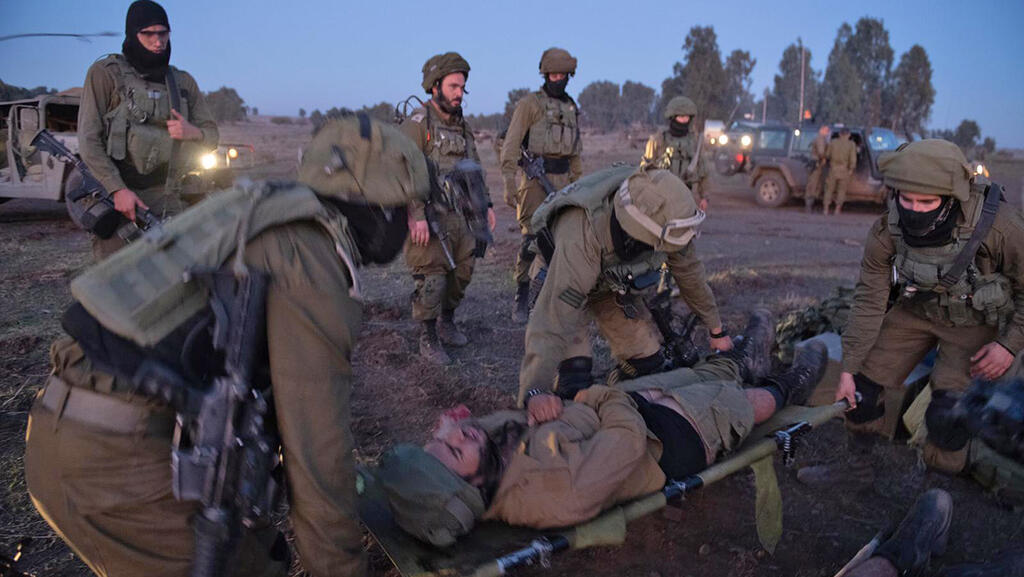Getting your Trinity Audio player ready...
The last exercise in the IDF with Merkava tanks Mark 3, Brigade 188
(IDF Spokesman's Unit, Adi Daghani, dji Israel)
A quintessential Israeli symbol is being exported to Europe for the first time: 40 years after they entered service in the Israel Defense Forces, old Merkava tanks manufactured in Israel are expected to be sold soon to two foreign armies, reach Europe, and continue to serve despite their advanced age.
Read more:
The US Department of Defense should soon approve an Israeli sale of hundreds of Merkava Mark 2 and Mark 3 tanks, that were manufactured in Israel in the 1980s and 1990s and have been decommissioned in recent years, to two foreign countries – one of them in Europe. The sale comes against the backdrop of the war in Ukraine and renewed demand for armored war vehicles. This is the first time that Merkava tanks will be sold to a European country.
The Defense Ministry is not specifying the names of the two countries that agreed on the purchase of more than 200 used Israeli tanks due to the sensitivity of the process, but the deal is on the verge of a final signature and is expected to be completed relatively soon, within about three months. Officials at the Defense Ministry told Ynet that since certain mechanical parts in these tanks are American made, especially the engine, approval from the Department of Defense in Washington is required to carry out the transaction.
According to some estimates, the scope of the deal will reach several tens of millions of dollars for all the tanks, an amount that will enter the state coffers and will probably be transferred directly to the defense establishment. This is an amount that is considered negligible in relation to the purchase of new Western tanks. By comparison, about a decade ago, the Defense Ministry offered a foreign country the opportunity to purchase a new Mark 4 Merkava tank from the production line for approximately $4 million per tank.
Additional details indicate that the two purchased will be divided – one will include the older Merkava Mark 2 tanks, and the other the Merkava Mark 3 that entered service in the 90s and mainly served the fighters of the 188th Brigade. In recent years these tanks have fallen out of use and today all three regular armored brigades – 401, 188 and 7th Brigade – are equipped with advanced Merkava Mark 4 tanks with an active defense system against anti-tank missiles, and computerized command and control systems.
3 View gallery


a Merkava Mark 3 in the Golan Heights, border of Syria
(Photo: IDF Spokesperson's Unit)
Some of the regular tanks, especially those with are not as old, were transferred to reserve brigades, including the 10th (Harel) brigade instead of the older Magach series tanks. However, more than 200 retired tanks remain in the IDF's maintenance depots.
At first, the defense establishment was pessimistic about the possibility of a foreign army purchasing them, and considered the possibility of selling them to iron recycling contractors. But the logistics officials maintained them well and, at the same time the war between Russia and Ukraine broke out last year, which changed the security needs of European countries. Initial interest in used tanks began in the middle of last year and the Defense Ministry rushed to check the condition of the old tanks, and found that they were serviceable enough to be sold.
Security officials explained that "producing a tank as an off-the-shelf product is a complex and long process that can take two years and cost a fortune; currently there are tanks that are qualified for operation tomorrow morning, in open and built-up areas." The officials also said that "Europe is in an arms race that has not been the same since World War II." For example, the German Ministry of Defense tripled its defense budget because of the tensions with Russia, while Sweden and Finland are joining NATO, and just yesterday the Israel's Defense Ministry reported an all-time record in the sale of Israeli weapons to the world – approximately $12.5 billion dollars in the past year.
It should be noted that there are still hundreds of M-113 armored personnel carriers (APC) in the IDF's warehouses that are also being retired, in light of the introduction of the Namer and Eitan APCs in recent years, mainly to the regular brigades. There is still no foreign demand for these APCs, which are not considered protected from anti-tank fire. At the same time, in recent years, Israel has succeeded in promoting the sale of decommissioned Air Force F-16 aircraft to the Croatian army. The security officials stated that "it is difficult to sell military surpluses, and we are trying to be attractive and extend their lives as much as possible."
Israeli-made tanks sold for the first time
The first Merkava tanks, the product of the development of Maj. Gen. Israel Tal (Talik) and the engineer Yisrael Tilan, were produced in Israel in the late 1970s, and their first version, the Mark 1, was integrated into operational activity for the First Lebanon War, Operation Peace for Galilee. Immediately after that, the Defense Ministry developed the follow-up version, Mark 2, with improvements that allowed warfare even in built-up areas, and with additions for passive protection.
Regular and reserve armored personnel carriers recorded thousands of successful battles in Merkava tanks in all recent Israeli operational systems, in the security zone in Lebanon, in Operation Guardians of the Wall, in the Second Lebanon War, in operations in the Gaza Strip before and after disengagement, as well as in ongoing security in the various sectors.






